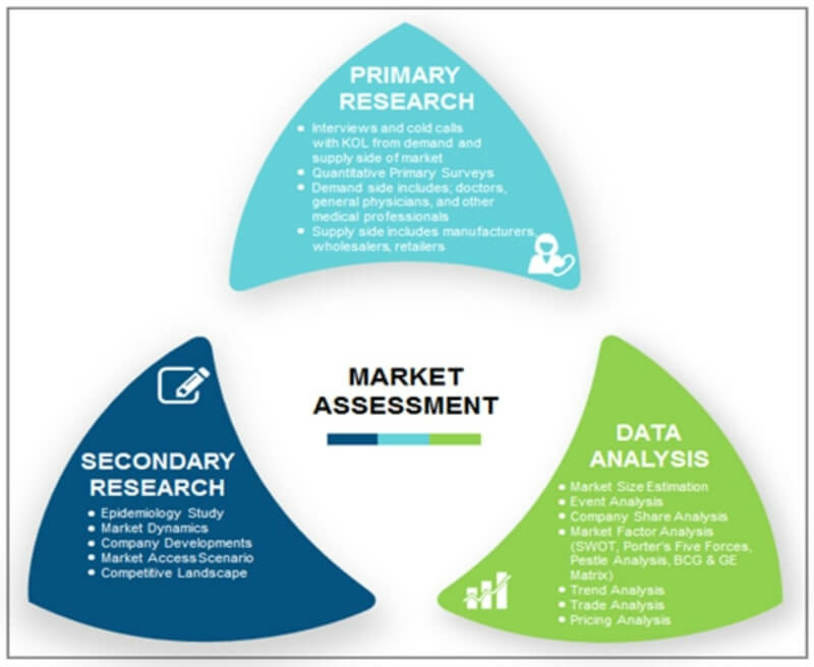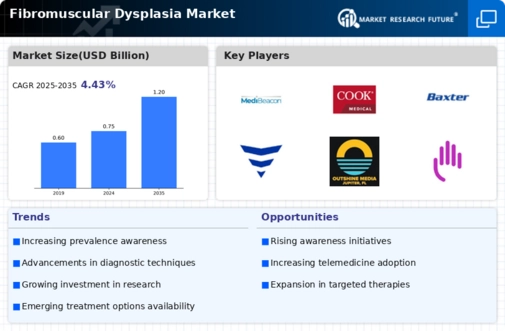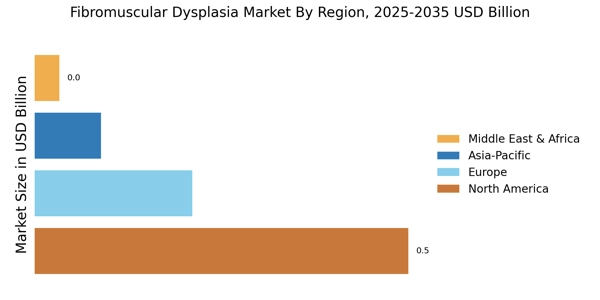Rising Demand for Personalized Medicine
The shift towards personalized medicine is becoming a significant driver in the Fibromuscular Dysplasia Market. Tailoring treatment strategies to individual patient profiles, including genetic and phenotypic characteristics, is gaining traction. This approach not only enhances therapeutic efficacy but also minimizes adverse effects, aligning with the growing patient-centric healthcare paradigm. As healthcare providers increasingly adopt personalized treatment plans for FMD, the demand for specialized diagnostic tools and targeted therapies is expected to rise. This trend may lead to the development of more effective interventions, thereby propelling growth within the Fibromuscular Dysplasia Market.
Advancements in Medical Imaging Technologies
Innovations in medical imaging technologies are significantly influencing the Fibromuscular Dysplasia Market. Techniques such as magnetic resonance angiography (MRA) and computed tomography angiography (CTA) have revolutionized the diagnostic landscape for FMD. These advanced imaging modalities enable clinicians to visualize vascular abnormalities with greater precision, facilitating earlier detection and intervention. The integration of artificial intelligence in imaging analysis is also emerging, potentially enhancing diagnostic accuracy and efficiency. As these technologies continue to evolve, they are expected to drive the demand for diagnostic services and related therapeutic options within the Fibromuscular Dysplasia Market, ultimately improving patient outcomes.
Growing Investment in Research and Development
The Fibromuscular Dysplasia Market is witnessing a surge in investment directed towards research and development initiatives. Pharmaceutical companies and research institutions are increasingly focusing on understanding the pathophysiology of FMD, which may lead to the discovery of novel therapeutic agents. This influx of funding is likely to accelerate clinical trials and the introduction of innovative treatment modalities. Moreover, collaborations between academia and industry are fostering a conducive environment for breakthroughs in FMD management. As new therapies emerge, they could reshape the treatment landscape, thereby expanding the Fibromuscular Dysplasia Market and enhancing the quality of care for affected individuals.
Increased Focus on Patient Education and Support
The emphasis on patient education and support is emerging as a crucial driver for the Fibromuscular Dysplasia Market. Healthcare organizations are recognizing the importance of equipping patients with knowledge about their condition, treatment options, and lifestyle modifications. Enhanced patient education initiatives can lead to improved adherence to treatment regimens and better health outcomes. Additionally, support groups and online resources are becoming more prevalent, fostering a sense of community among individuals affected by FMD. This increased focus on patient engagement is likely to drive demand for healthcare services and products within the Fibromuscular Dysplasia Market, ultimately benefiting both patients and providers.
Increasing Prevalence of Fibromuscular Dysplasia
The rising incidence of fibromuscular dysplasia (FMD) is a pivotal driver for the Fibromuscular Dysplasia Market. Recent studies indicate that FMD affects approximately 1 in 1,000 individuals, with a notable increase in diagnoses attributed to enhanced awareness and improved diagnostic techniques. This growing prevalence necessitates the development of targeted therapies and interventions, thereby propelling market growth. Furthermore, the demographic shift towards an aging population may contribute to a higher incidence of vascular diseases, including FMD. As healthcare providers become more attuned to the symptoms and complications associated with this condition, the demand for specialized treatment options is likely to escalate, further stimulating the Fibromuscular Dysplasia Market.


















Leave a Comment